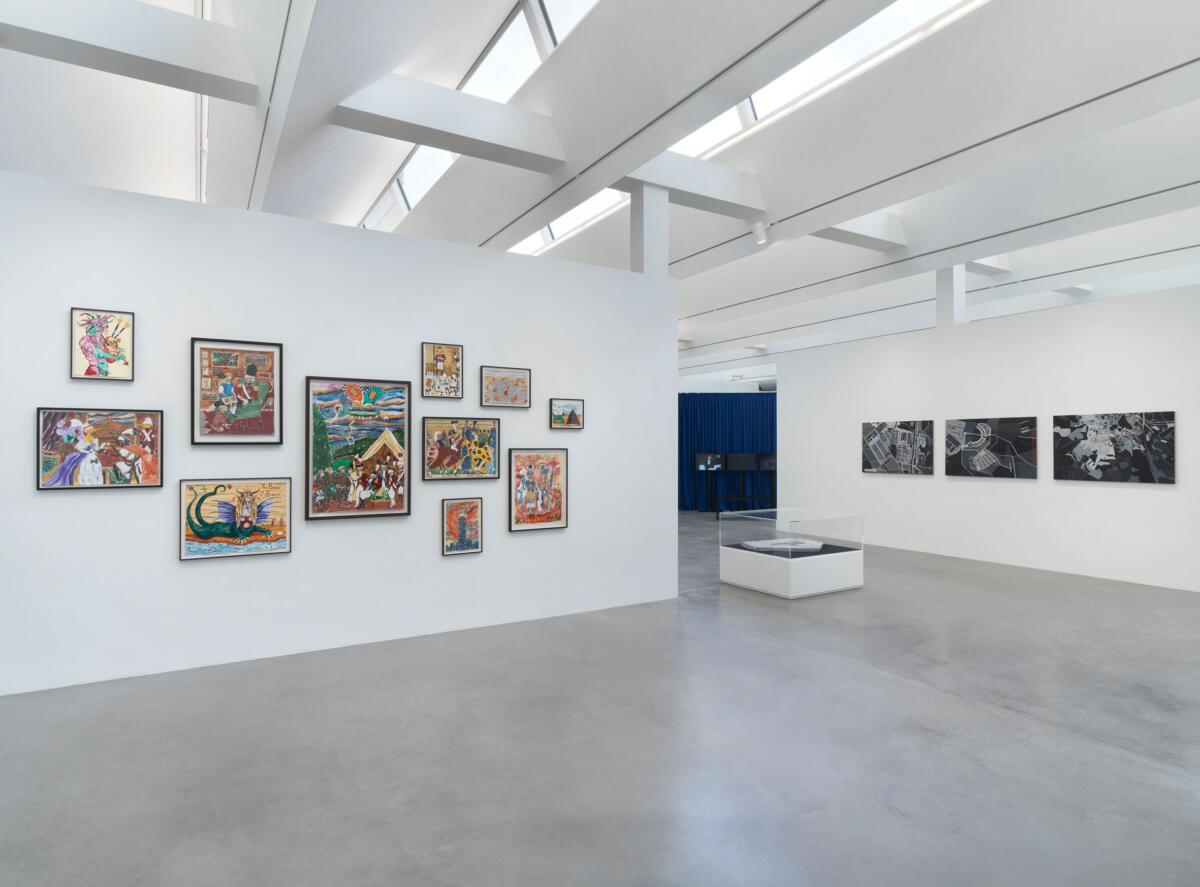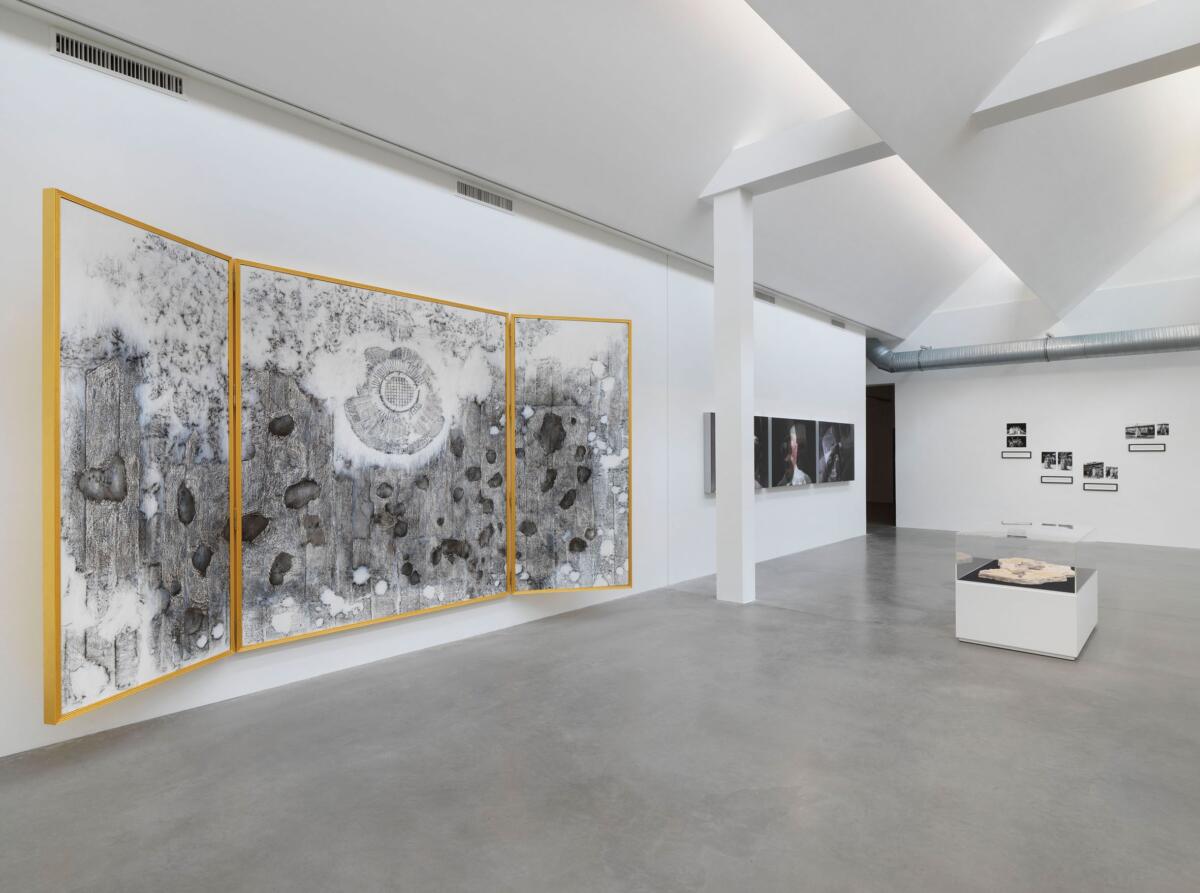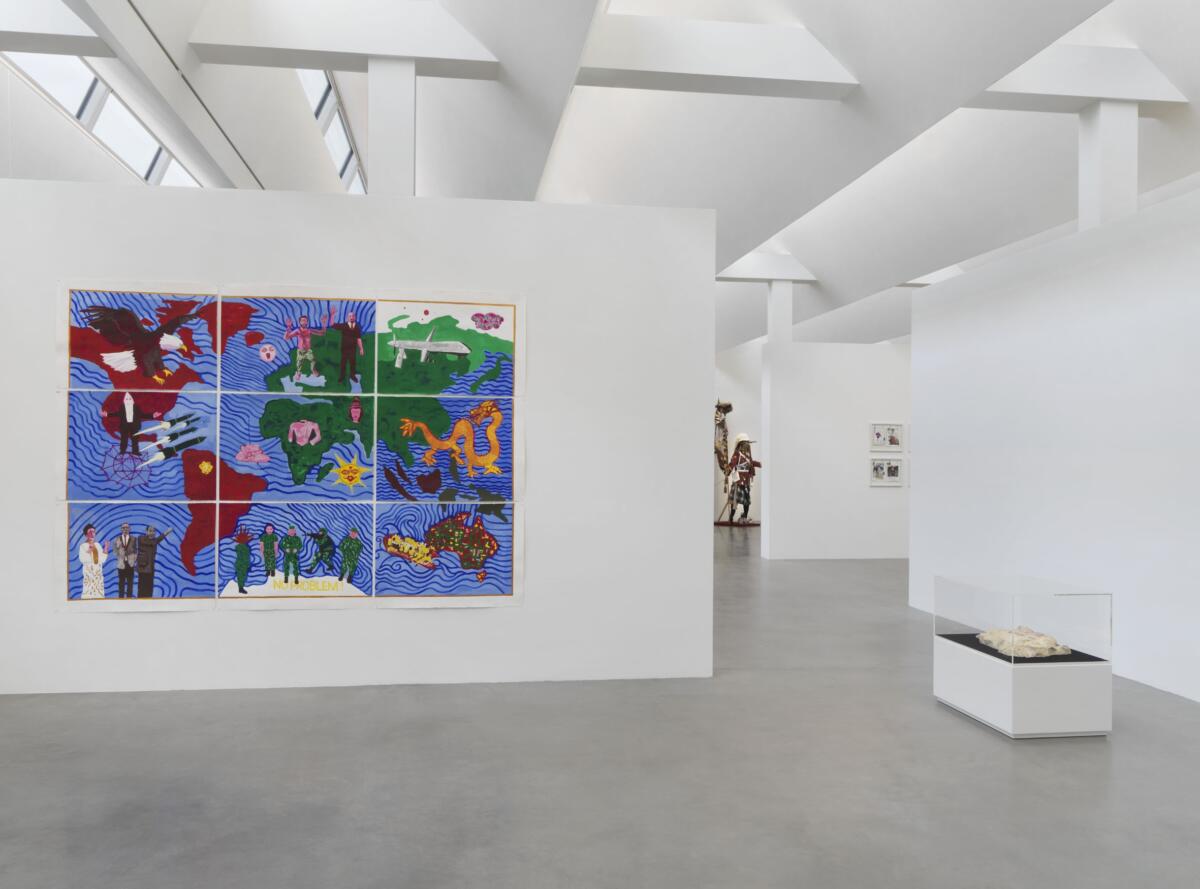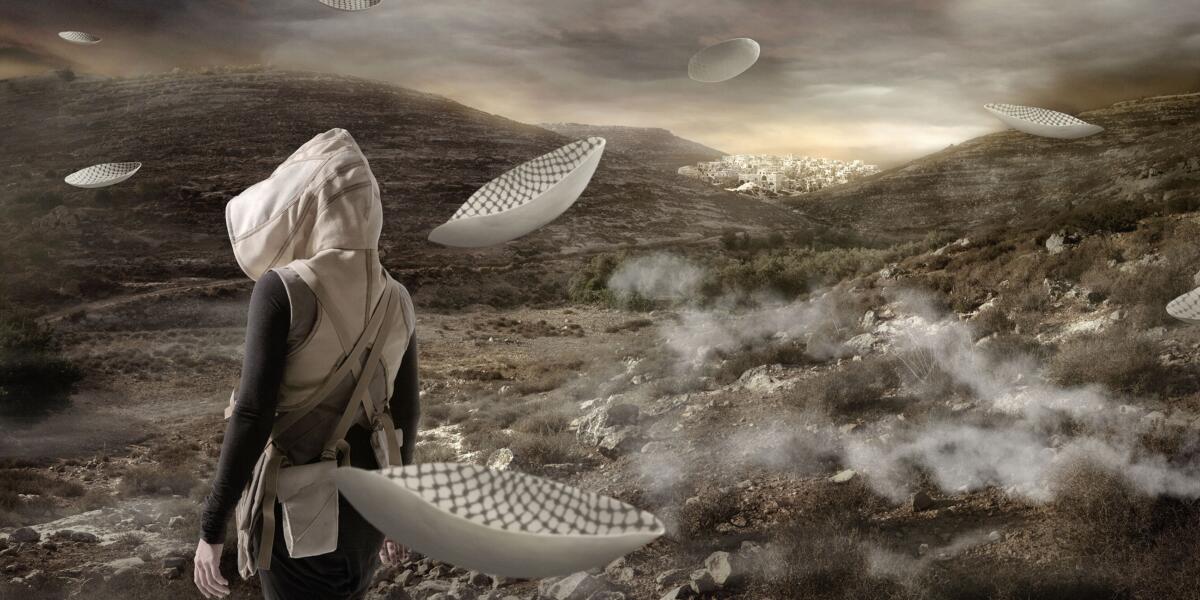‘[EN/DE] The Invented History’ at KINDL Centre for Contemporary Art
![‘[EN/DE] The Invented History’ at KINDL Centre for Contemporary Art](http://blokmagazine.com/wp-content/uploads/2021/01/kindl-yael-bartana-rip-m16-300dpi-1200x837.jpg)
[EN]
The group exhibition The Invented History examines the need to critically question historical narratives. At the latest with the influence of globalisation, a re-evaluation of historiography has become necessary: it is no longer viewed as a simple collection of data and facts, a linear sequence of clearly defined events. Instead, there is a growing awareness that historiography must always also be interpreted under the political auspices of its “authors”. Today there are increasing attempts to control the interpretation of history—first and foremost by anti-democratic forces around the world. The artists in the exhibition track down previously concealed or suppressed historical phenomena, view history through the filter of their own biography, and thus work on a critical historiography in contrast to existing systems of rule.
Artistic research is an important method for the artists in the exhibition. Anna Dasović’s work Request for erased and ‘blurry’ photographs (2015–17) traces the political entanglements of two rolls of film that were used by members of the Dutch UN battalion during the genocide in Srebrenica in the summer of 1995. Bosnian-Serb militias penetrated the UN safe area and murdered more than 8,000 Muslim men and boys in front of Dutch UN Blue Helmets. Only three “blurry photographs” exist from these two rolls of film, which were made public in the Netherlands only after the artist’s intervention.
Maryam Jafri also poses questions about copyright, digitisation, and foreign ownership of national heritage. On the website of the photo agency Getty Images, the artist discovered photographs from Ghana’s declaration of independence on 6 March 1957—the first documents of the liberation of Sub-Saharan Africa from Western domination—which are also held in the archives of Ghana’s Ministry of Information. In her installation Getty vs. Ghana (2012) she compares the images and reveals incorrect dates, keywords, and captions as well as obvious manipulations of the original files.
In her research on a film about Anatolian carpets and their significance for the region’s cultural memory, Maja Weyermann discovered the key role that Armenian carpet knotting played in production in Turkey before 1915, in the time before the systematic genocide against the Armenians. Processes of remembering and (politically intentional) forgetting are also the subject of Aslan Ġoisum’s film People of No Consequence (2016), which likewise deals with the recovery of knowledge about historical processes—in this case, the oppression and deportation of the local population from what is now the Russian republic of Chechnya, which began under the Soviet power.
Other artists in the exhibition turn to utopian futures and thus question our understanding of historiography. Yael Bartana’s petrified weapons R.i.P. Uzi, R.i.P. M16, and R.i.P. Smith & W (all 2019) are a vision of a distant time when weapons only exist as fossils from an antiquated stage of civilisation. The video In the Future They Ate from the Finest Porcelain (2015) by Larissa Sansour and Søren Lind also shows history as a complex network: a fictional resistance fighter buries porcelain objects as supposed traces of a past civilisation with the aim of creating a new historiography in which facts and fictions merge to form a new narrative.






[DE]
Die Gruppenausstellung The Invented History untersucht die Notwendigkeit, historische Narrative kritisch zu hinterfragen. Spätestens unter dem Einfluss der Globalisierung muss Geschichtsschreibung neu bewertet werden: Sie wird nicht mehr als reine Ansammlung von Daten und Fakten, als eine linear nachzuerzählende Abfolge von eindeutigen Ereignissen betrachtet. Stattdessen wächst das Bewusstsein, dass Geschichtsschreibung immer auch unter den politischen Vorzeichen ihrer „Autor*innen“ gelesen werden muss. Heute finden sich zunehmend Versuche, sich der Deutung von Geschichte zu bemächtigen – vor allem durch antidemokratische Kräfte weltweit. Die Künstler*innen der Ausstellung spüren bisher verschwiegene oder unterdrückte historische Phänomene auf, betrachten Geschichte durch den Filter ihrer eigenen Biografie und arbeiten so an einer kritischen Geschichtsschreibung in Abgrenzung zu bestehenden Herrschaftssystemen.
Die künstlerische Recherche stellt für die Künstler*innen der Ausstellung eine wichtige Methode dar. So zeichnet Anna Dasovićs Arbeit Request for erased and ‘blurry’ photographs (2015–2017) die politischen Verwicklungen im Zusammenhang mit zwei fotografischen Filmrollen nach, die während des Völkermordes in Srebrenica im Sommer 1995 von Mitgliedern des niederländischen UN-Bataillons aufgenommen wurden. Bosnisch-serbische Milizen drangen damals in die UN-Schutzzone ein und ermordeten vor den Augen niederländischer UN-Blauhelme mehr als 8.000 muslimische Männer und Jungen. Von diesen zwei Filmrollen existieren lediglich drei „verschwommene Fotografien“, die erst nach der Intervention der Künstlerin in den Niederlanden überhaupt öffentlich gemacht wurden.
Auch Maryam Jafri stellt Fragen hinsichtlich des Urheberrechts, der Digitalisierung und des ausländischen Eigentums von nationalem Erbe. Auf der Website der Bildagentur Getty Images entdeckte die Künstlerin Fotografien von der Unabhängigkeit Ghanas am 6. März 1957 – erste Dokumente der Befreiung Schwarzafrikas von der westlichen Vorherrschaft –, die auch im Archiv des Ghanaischen Informationsministeriums enthalten sind. In ihrer Installation Getty vs. Ghana (2012) stellt sie die Bilder einander gegenüber und macht fehlerhafte Daten, Schlagworte und Bildunterschriften sowie offensichtliche Manipulationen an den Originaldateien sichtbar.
In ihrer Recherche zu einem Film über anatolische Teppiche und deren Bedeutung für das kulturelle Gedächtnis der Region stößt Maja Weyermann auf die Schlüsselrolle, die die armenische Teppichknüpfkunst für die Produktion in der Türkei vor 1915 einnahm – also in der Zeit vor dem systematischen Völkermord an den Armenier*innen. Prozesse der Erinnerung und des (politisch gewollten) Vergessens sind auch Thema von Aslan Ġoisums Film People of No Consequence (2016), der ebenfalls die Wiederbelebung von Wissen um historische Prozesse zum Thema hat – in seinem Fall die Unterdrückung und Vertreibung der lokalen Bevölkerung der heutigen russischen Teilrepublik Tschetschenien, die bereits unter der Sowjetmacht begann.Andere Künstler*innen der Ausstellung wenden sich utopischen Zukünften zu und hinterfragen so unser Verständnis von Geschichtsschreibung. Yael Bartanas versteinerte Waffen R.i.P. Uzi, R.i.P. M16 und R.i.P. Smith & W (alle 2019) sind eine Vision einer fernen Zeit, in der Waffen nur noch als Fossilien einer überholten Zivilisationsstufe existieren. Auch das Video In the Future They Ate from the Finest Porcelain (2015) von Larissa Sansour und Søren Lind zeigt Geschichte als ein komplexes Geflecht: Eine fiktive Widerstandskämpferin vergräbt Porzellanobjekte als vermeintliche Spuren einer vergangenen Zivilisation mit dem Ziel einer neuen Geschichtsschreibung, in der Fakten und Fiktionen zu einer neuen Erzählung verschmelzen.
Imprint
| Artist | Yael Bartana, Ramesch Daha, Anna Dasović, Jean-Ulrick Désert, Andrew Gilbert, Aslan Ġoisum, Maryam Jafri, Nadia Kaabi-Linke, Zartosht Rahimi, Larissa Sansour / Søren Lind, Maja Weyermann, Akram Zaatari |
| Exhibition | The Invented History |
| Place / venue | KINDL – Centre for Contemporary Art, Berlin, Germany |
| Dates | 13 September 2020 – 21 February 2021 |
| Curated by | Kathrin Becker |
| Photos | Jens Ziehe |
| Website | www.kindl-berlin.com |
| Index | Akram Zaatari Andrew Gilbert Anna Dasović Aslan Goisum Jean-Ulrick Désert Kathrin Becker KINDL – Centre for Contemporary Art Larissa Sansour Maja Weyermann Maryam Jafri Nadia Kaabi-Linke Ramesch Daha Søren Lind Yael Bartana Zartosht Rahimi |



